By participating in the Korean Cultural Centre India’s Humanities Lecture Series on July 14 and 15, I found myself immersed in a fascinating journey through Korean history, culture, and traditions. The 'Korean House Course' was more than just an architecture lecture. It offered a glimpse into how the Korean way of living reflects values of harmony, respect, and family, and how these values still resonate today, even beyond Korea’s borders.
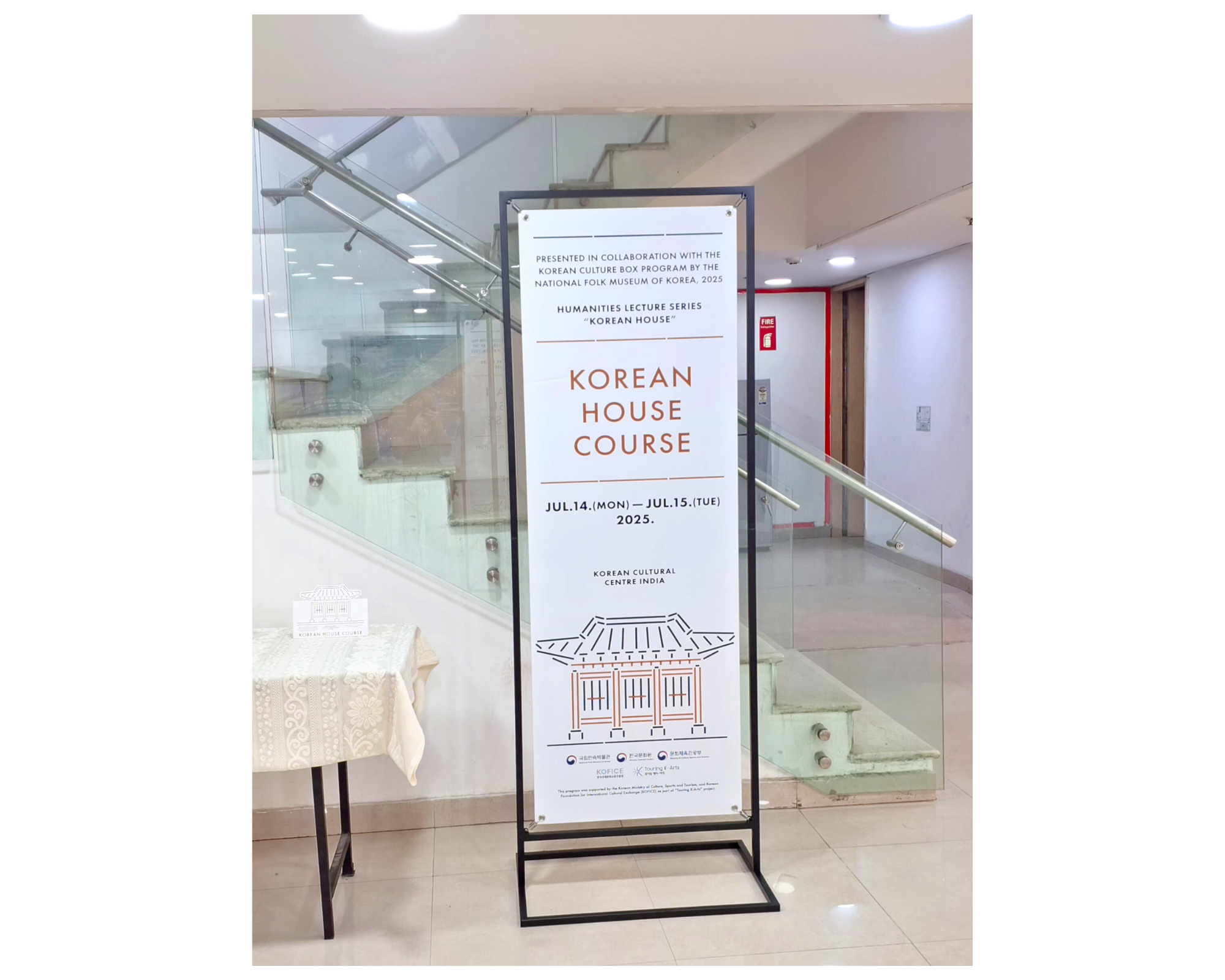
The event, led by a visiting expert from Korea, introduced us to the timeless beauty of Hanok (한옥), Korea’s traditional houses. These homes are admired not only for their elegant design and eco-friendly construction, but also for the cultural significance embedded in their spaces and rituals. The speaker explained that every part of a Hanok had a purpose beyond function, designed to maintain balance with nature and to protect the family from harm. Paper charms with protective inscriptions were attached to the main doors to keep away bad energy, and tiger bone ornaments were hung at the entrance when a baby was born to safeguard the mother and child. Listening to these stories, I realized that Hanok was as much about the well-being of the spirit as about shelter for the body, a perspective that feels deeply meaningful even today.

The ingenious Ondol (온돌) underfloor heating system particularly stood out. At a time when modern heating did not exist, Korean homes already used this sophisticated method to keep interiors warm, a concept that continues to influence modern apartments. The speaker also described the strict gender roles reflected in Hanok interiors. Certain quarters were reserved exclusively for women, and men were not permitted to enter those spaces. Yet, there was still space for intimacy and human connection, as husbands sometimes quietly visited their wives in the women’s quarters despite the societal boundaries. It reminded me of how homes are not only places of rules but also of relationships, memories, and warmth.
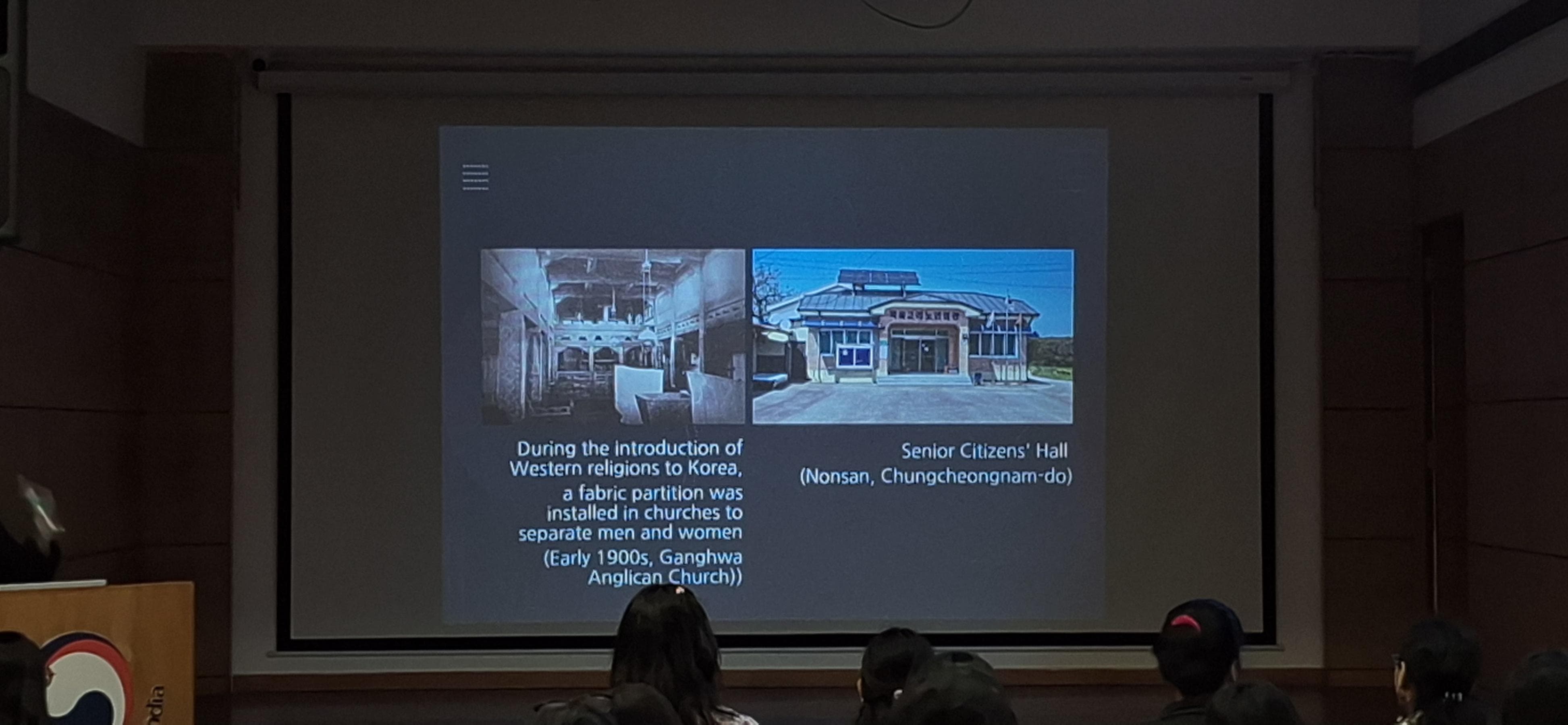
After the lecture, we toured the museum exhibits that brought these ideas to life. Seeing the traditional wedding items on display gave us a deeper appreciation of how symbolism is woven into every ritual. The bride’s coronet Jokduri (족두리), hairpin Binyeo (비녀), ribbons Apdaenggi (앞댕기), and delicate fan Honseon (혼선) were not just accessories but carried prayers for modesty, harmony, and fertility, as seen in the embroidered pomegranate patterns symbolizing hopes for many children. For the groom, embroidered insignias Hyungbae (흉배) depicted cranes or tigers, denoting his rank and role.
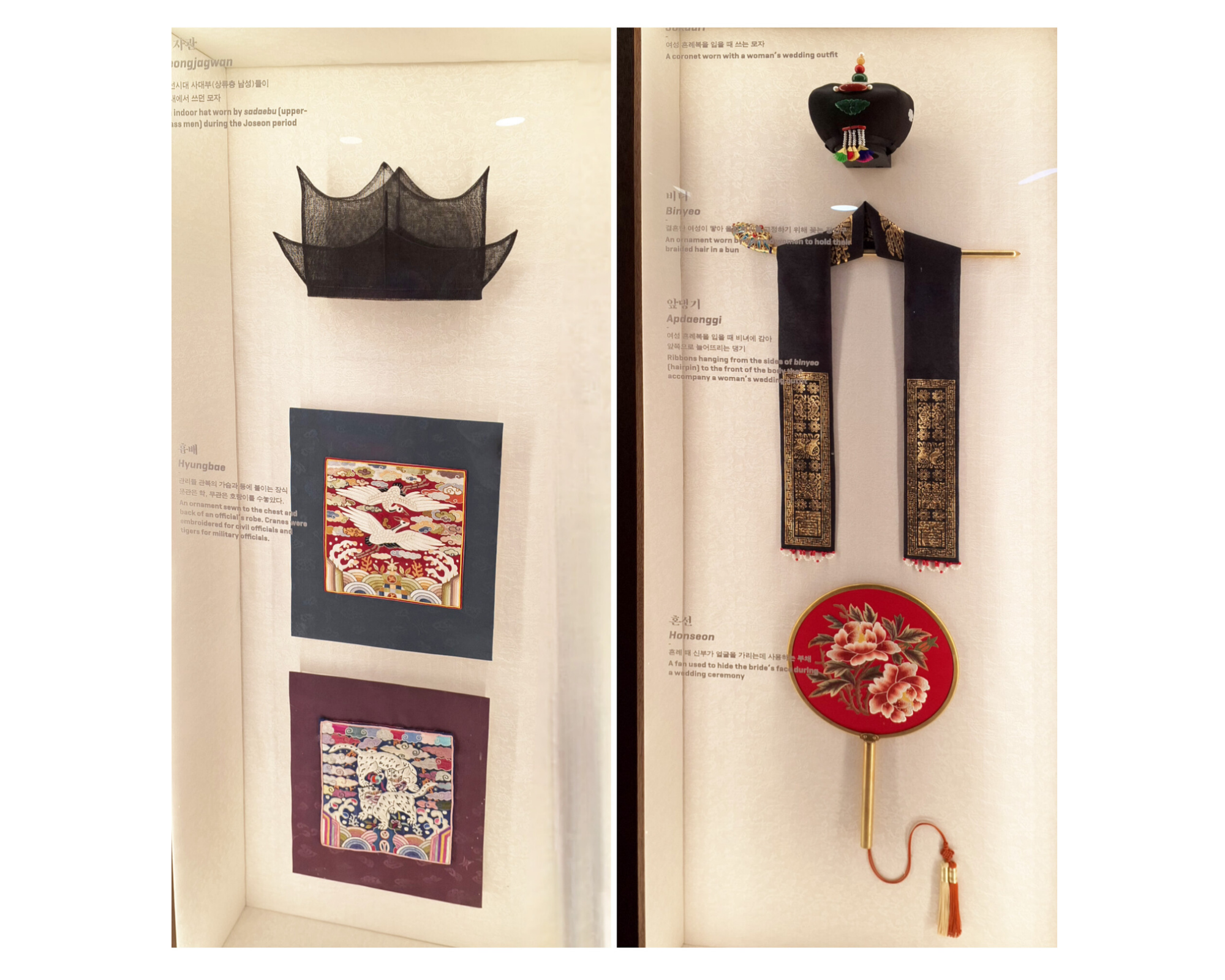
The museum also showcased household items that reflected everyday life in Korea. A vanity box with a mirror, sewing tools, and porcelain vases spoke of the quiet dignity and artistry of daily life in Korea. Children’s ceremonial clothing, like the blue Hogeon (호건) hat with tiger eyes and the colorful Jogakbo (조각보) patchwork cloth, reflected how even the youngest members of the family were wrapped in blessings and protection. The scholar’s desk, brushes, and ink stone reminded us of Korea’s longstanding reverence for education, a value that continues to inspire today.
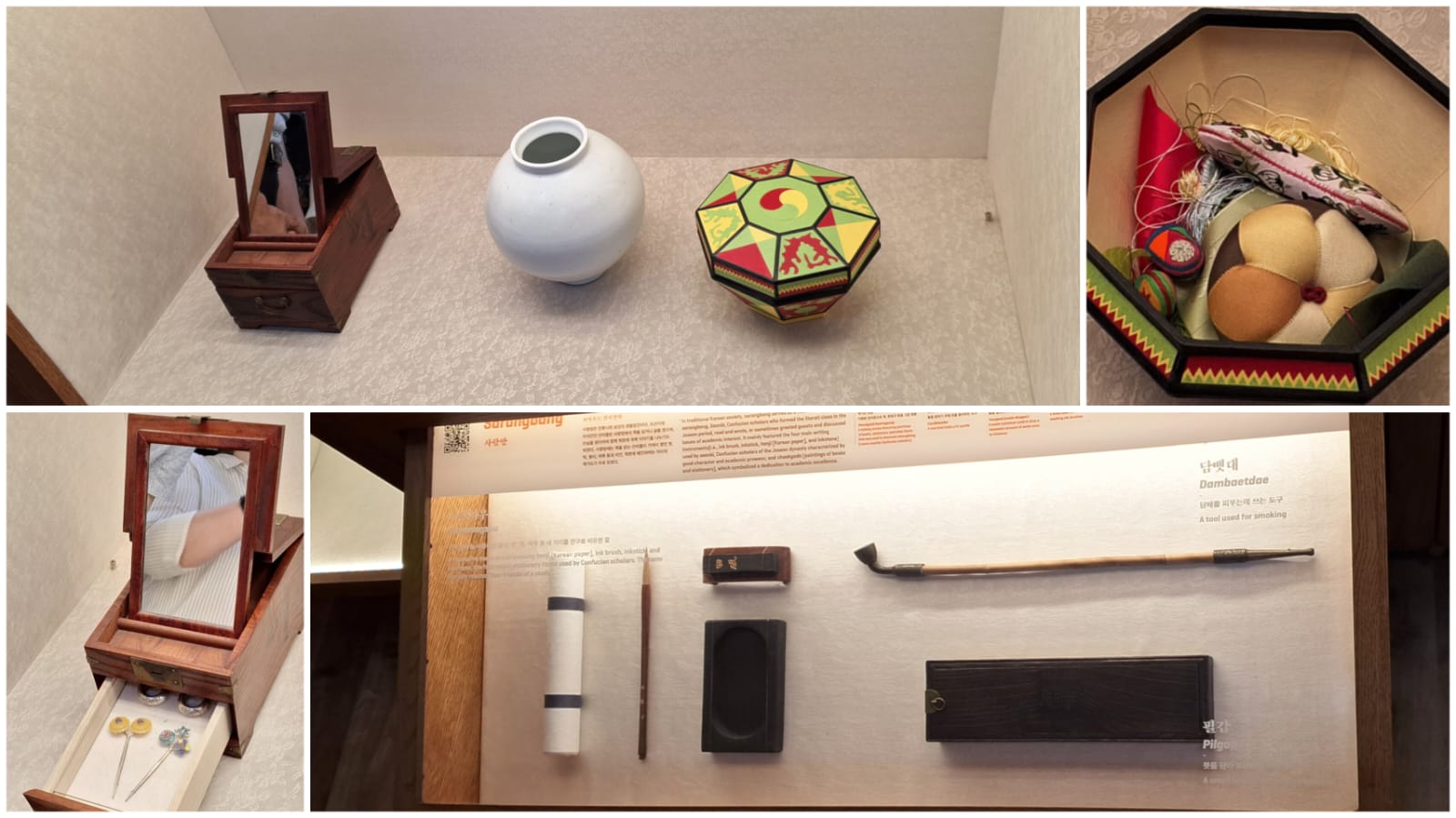
What made the experience truly unforgettable was the hands-on activity of assembling a miniature Hanok (한옥) model. As I pieced together the wooden parts, I felt a connection to the care and thoughtfulness that went into building a real Hanok. It made me reflect on the deeper meaning of home and how spaces can reflect the values of those who inhabit them.
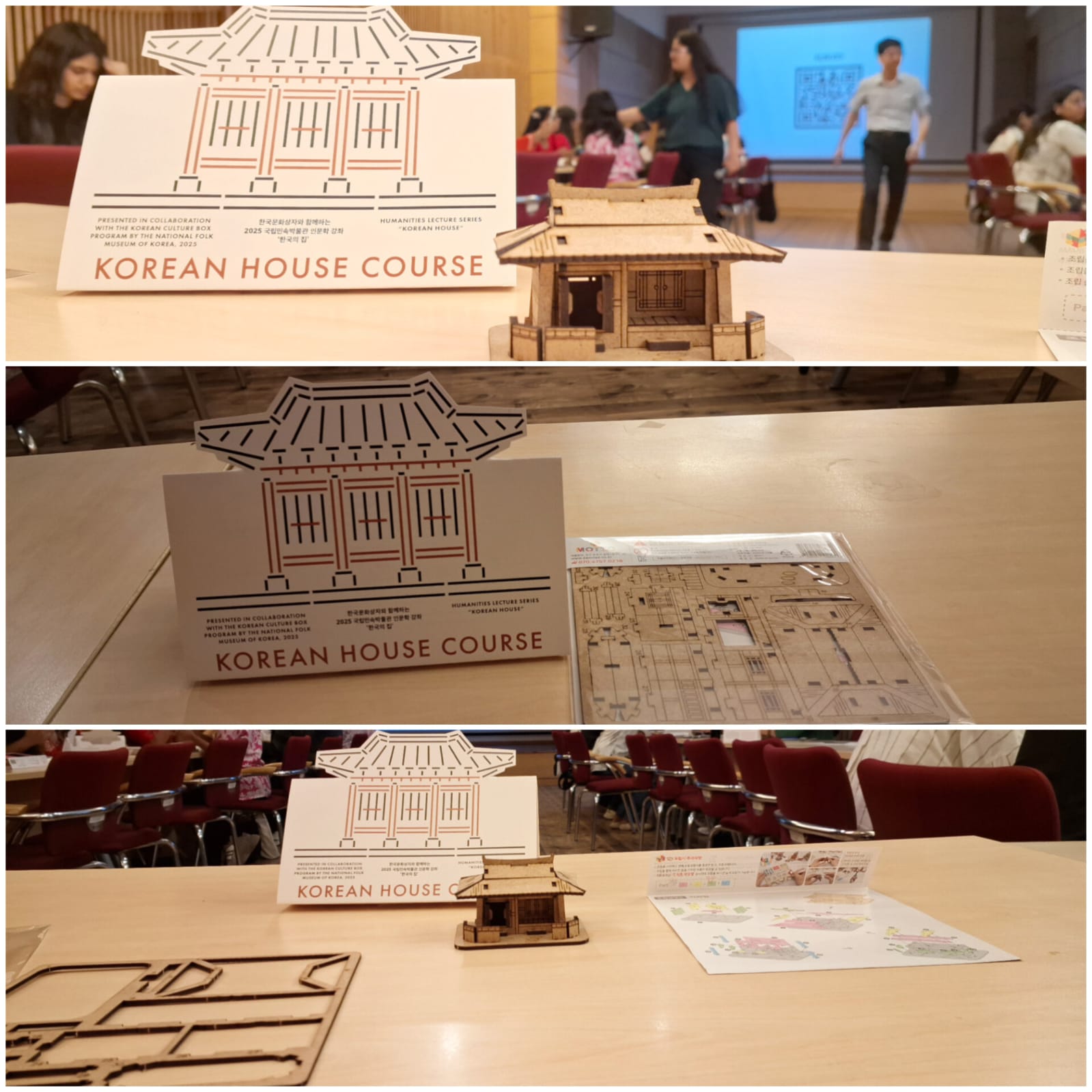
For me, this event went beyond simply learning about another culture. As someone living in India, I could feel parallels between Korean traditions and our own, including the respect for family, the desire to protect loved ones, and the value placed on modesty and education. It showed me how cultural heritage, no matter where it comes from, has the power to bring people closer together and help them understand one another.
By the end of the session, I had gained more than just knowledge. I left with a renewed respect for Korean culture and an appreciation for how preserving these traditions can enrich lives far beyond Korea’s borders. It also reminded me of the importance of cultural exchange in fostering mutual understanding between nations like India and Korea.
This event was a beautiful example of how heritage can transcend geography and speak to the universal human desire for home, harmony, and connection.
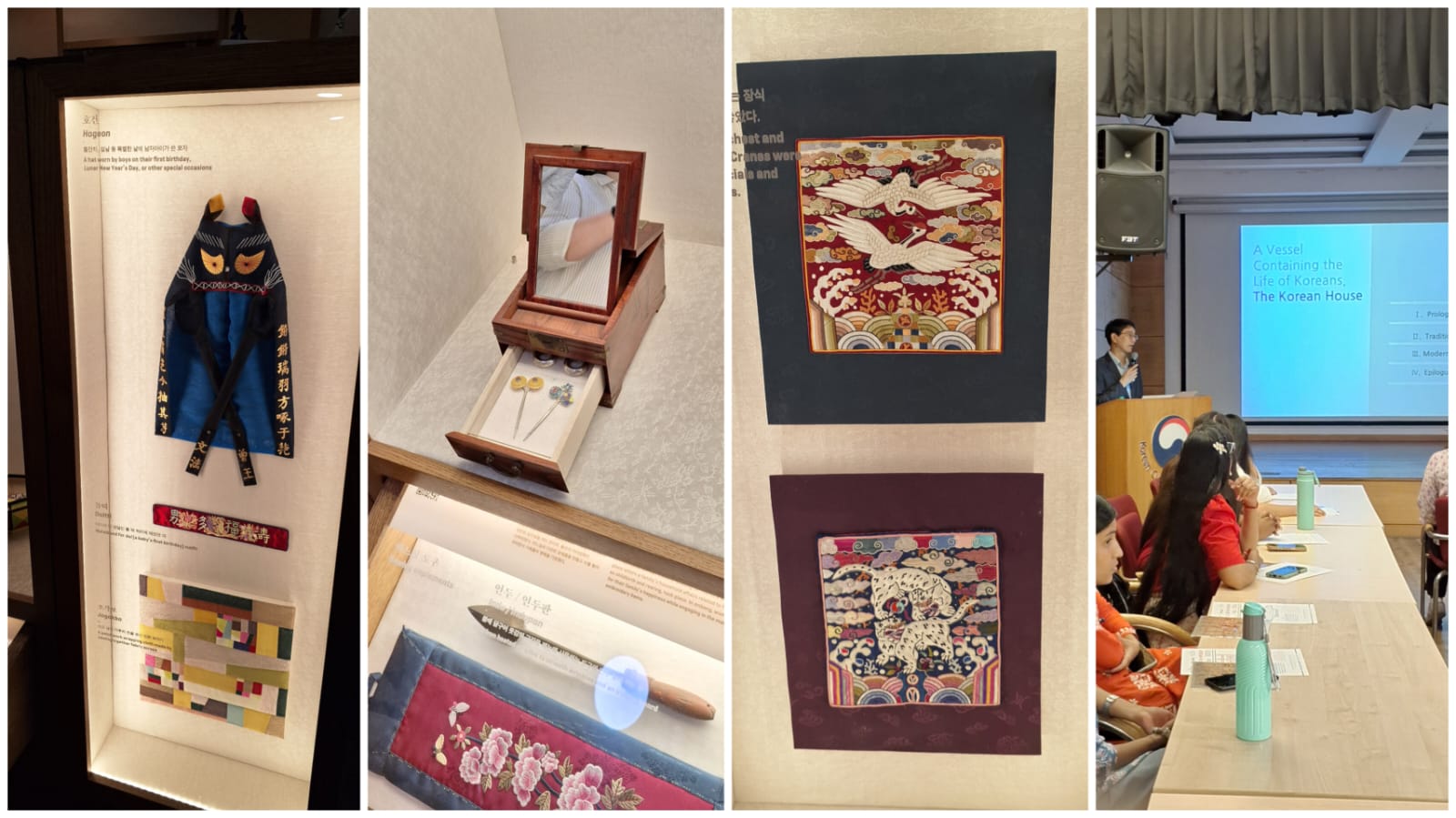
All photographs featured in this article were taken by Honorary Reporter Anjali.
How about this article?
- Like8
- Support0
- Amazing8
- Sad0
- Curious0
- Insightful2


